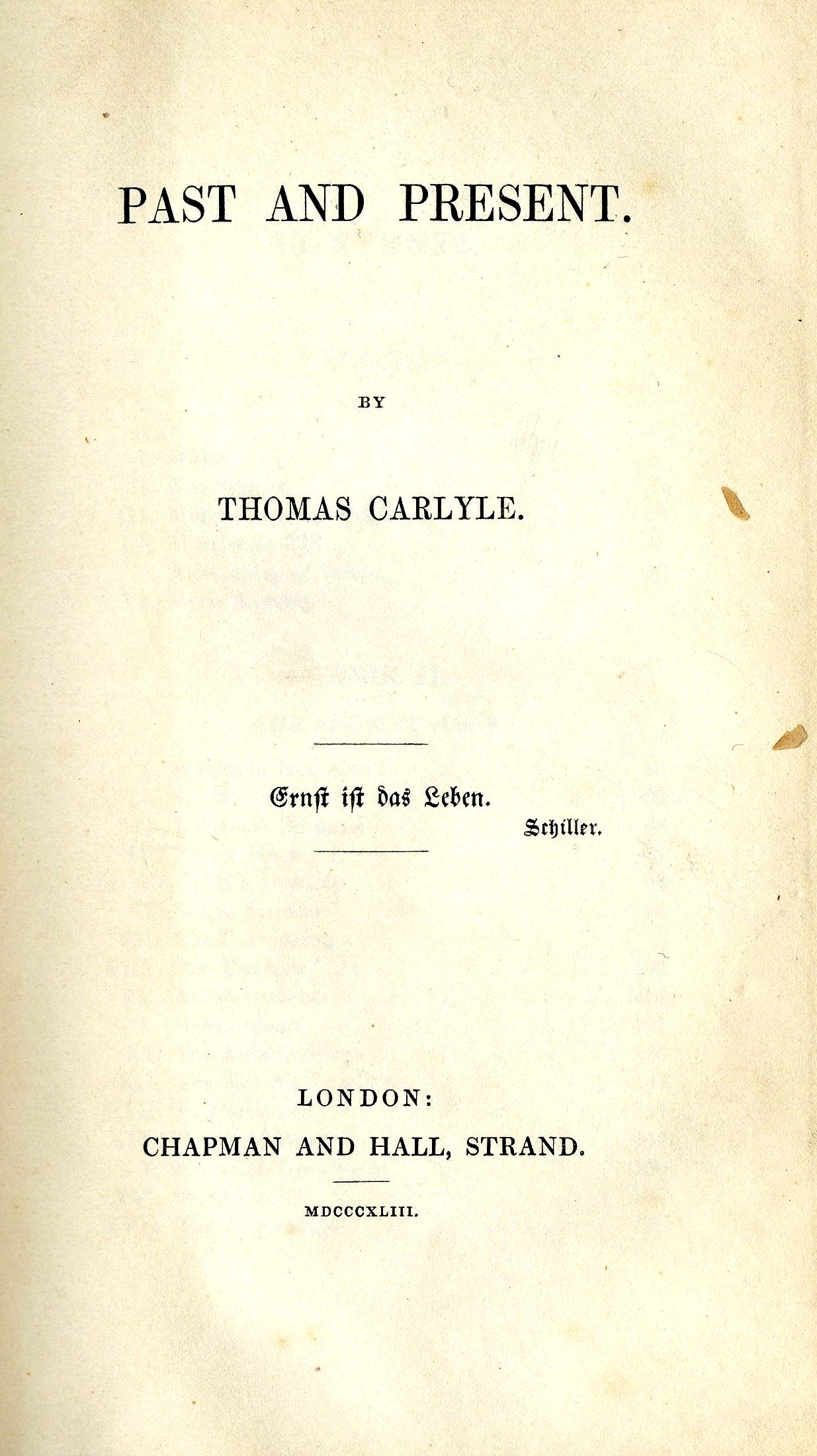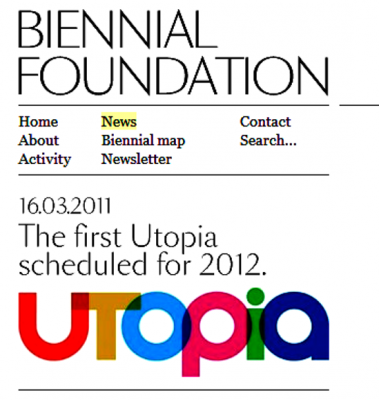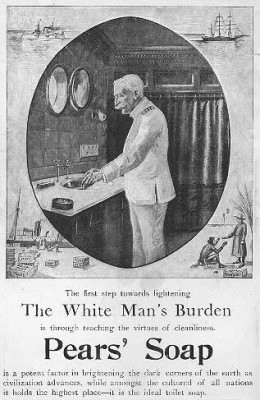“Utopia Factory” by Stéphane Degoutin and Gwenola Wagon, 2010
"If ideologies are not only manifestations of the socially necessary consciousness in its essential falsity, if there is an aspect to them that can lay a claim to truth inasmuch as it transcends the status quo in utopian fashion, even if only for purposes of justification, then this ideology exists at all only from this period on."
Jürgen Habermas.The Structural Transformation of the Public Sphere: An Inquiry into a Category of Bourgeois Society. 1962
"Mental culture is emphatically useful."
John Henry Cardinal Newman.The Idea of University. 1852
1. La Hipótesis del Artista Solitario
No existe tal cosa como el artista por su lado y el sistema que lo mantiene por el otro. No existe tal cosa como el bello
"encuentro fortuito, sobre una mesa de disección, de una máquina de coser y un paraguas»
de Lautréamont. El artista, inmerso en el delirio de que las transacciones son solo monetarias, piensa que un contrato efímero de un día, de una semana, de un mes, no tiene, al ser difundido, ninguna causa y mucho menos una consecuencia ideológica. Pero más aún - y éste es el punto fundamental- cree y hace creer a su público que está obrando por su cuenta. Es románticamente independiente. (1)
La ilusión de independencia en la mecánica de la Ideología es uno de sus elementos nucleares. Mediante la negación ideológica vinculante que se hace a sí mismo el transmisor, el agente inoculador, el artista, cree que su arte es "único" (2) y su visión "independiente" (3)
Marx. Ideología Alemana. 1845. Manuscrito del capítulo Feuerbach
La glamourización Neo-romántica y Neo-victoriana de la pobreza, de la violencia, de la desgracia, del exilio, del desplazamiento y de la muerte. (4) El racismo misionario dulcificado y la voluntad de control social del Multiculturalismo y la teoría Poscolonial. (5) El Turismo de primera clase por el basurero, el barrio pobre y la Casa Comunal de las teorías Altermoderna, Geoestética y Decolonial con su retórica del "borde cultural" y su tono de "emancipación anti-imperialista" - fabricado desde la academia imperialista y lo suficientemente azucarado como para ser enlatado en su producción teórica - no son más que la misma inyección ideológica inoculada con una nueva jeringa semántica cada vez que pierde fuerza a causa de su abuso retórico y su inconsecuencia política (6).
Una vez pasados todos los conflictos sociales por la retorta del perfecto y limpio espacio de la galería o el Pabellón y etiquetados por el discurso curatorial y el panegírico académico, se convierten en pura ideología dominante destilada:
“Los museos tienen galerías y celdas, nada diferente a los manicomios y las cárceles; son sus neutras salas de exposiciones. Cuando se coloca una obra de arte en semejante espacio, ésta pierde su potencia explosiva y se convierte en un objeto portátil sin ningún vínculo con el mundo exterior. Una habitación vacía, blanca e iluminada sigue constituyendo una rendición a la neutralidad [....] La función del curador supervisor es aislar el arte del resto de la sociedad. Después viene la integración. Es el momento en el que la obra de arte, ya totalmente neutralizada, sin efecto, abstracta, inofensiva y políticamente lobotomizada, puede ser consumida por la sociedad” Robert Smithson. Cultural Cofinement. 1972
Tras la amputación quirúrgica de la ideología en la superestructra de la sociedad - la educación, la prensa, los medios, la intelectualidad y la academia, con el pretexto "rebelde" de "abolir" la Modernidad y restablecer el folklore pre-moderno, pero cuya verdadera intención es ocultar la mecánica superestructural del Laissez Faire Corporativo - lo que queda del artista es, a la luz de la política real, un analfabeta político cuya monomanía es la política; un prestidigitador astuto y populista que, en su "ignorancia paradisíaca" y su anti-intelectualismo, nos recuerda más a Reagan y a Rancière que a Rousseau (6a)
La aspersión colectiva de la ignorancia de la que Oscar Wilde habla (6b) cumple su obetivo estratégico. El artista no puede explicarse cómo funcionan las relaciones de producción en las que está inmerso. Le "interesan" las contradicciones del capitalismo como tema, como espectáculo, como mercancía y como trampolín de ascenso social, pero no como parte de un diseño superestructural (Marx, Grundrisse der Kritik der Politischen Ökonomie ) del que descubriría que hace parte esencial. La ignorancia por supuesto le conviene. ¿Quién querría verse en ese espejo donde él mismo se descubriría como un Dr. Hyde moral que cumple un papel básico del engranaje para que las relaciones de producción no cambien?
"Lo que parece suceder así fuera de la ideología (con más exactitud en la calle) pasa en realidad en la ideología. Lo que sucede en realidad en la ideología parece por lo tanto que sucede fuera de ella. Por eso aquellos que están en la ideología se creen por definición fuera de ella [...] Se sabe perfectamente que la acusación de estar en la ideología sólo vale para los otros, nunca para sí. " Althusser. Ideología y Aparatos Ideológicos de Estado. 1970.
Louis Althusser
El artista contemporáneo que no se resigna a 'no curatorializar' e hiperbolizar formalmente el discurso político infantilizado, básico, sentimental, filantrópico, anti-intelectual y desafiante, se baña en la ilusión de que no tiene responsabilidad alguna en la inoculación de los valores del sistema y de que su trabajo es inocuo a la hora de reproducir las nuevas formas de explotación; es decir, cree o quiere creer - en un proceso auto-anestésico que lo mantenga inmune al remordimiento ético - que sus transacciones son puramente y "lamentablemente para él", monetarias.
No solo eso. Va más allá y cree, y hace creer, que su obra redentora es "necesaria" para "transformar" conciencia y realidad. Crea, mediante la ideología misionaria corporativa, el delirio de ser moralmente indispensable.
Así, como el personaje empáticamente victoriano que es - siendo tan pomposo y pulido en su discurso público - es paródicamente barato en su filosofía. Su discurso estético y personal no es otra cosa que un ajuste de sus ideas a sus estrategias de ascenso social dentro de la más victoriana de las sociedades posibles: el Laissez Faire (6c).
Pip Pirrip, Becky Sharp, Jane Eyre, están más cerca de la complejidad - simplicidad - de su camaleónico carácter pequeñoburgués desenvolviéndose astutamente dentro del actual salvajismo corporativo, que cualquier otro héroe literario. Nadie define su carácter como la inefable George Eliot hablando del héroe victoriano:
"The offspring of a certain spiritual grandeur ill-matched with the meanness of opportunity." (7)
La característica más victoriana de la "beligerancia" institucionalizada del Arte Contemporáneo es que, en un Eterno Retorno histórico, también es hija del Laissez Faire. Florece cuando Reagan y Tatcher resucitan la libre empresa desatada en anarquía y la liliputización del Estado características del siglo XIX. Con dicha resurrección resucitan el sacrificio recesivo, el apocalipsis fiscal y el "cada uno sálvese como pueda" en el que el mundo actual vive sin ninguna señal de que pueda ser revertido hacia una forma de capitalismo regulado. Máxime cuando la misma concepción del Estado contemporáneo es la de un cuerpo controlado por el lobby corporativo -un sistema de intercambio mafioso de mercado con tolerancia jurídica - y no controlado por el pueblo. Eso, en total oposición a la idea fundamental de la democracia y más cercano a una concepción monárquica y plutocrática del mercado. Y entonces, como en el siglo XIX y como la estela que deja el barco sin timón del mercado a la deriva de sus propias leyes, aparece el "Arte Comprometido" para dulcificar el veneno del conflicto social que trae consigo el Laissez Faire (7b).
El Arte Contemporáneo y su ideología que recalienta las sobras victorianas del "conservatismo compasivo" y el misionarismo ecuménico de Kipling, con sus derivadas de "multiculturalismo, identidad étnica, tolerancia, otredad y emancipación poscolonial" se diseña entonces desde la academia controlada por la plutocracia para ser su soporte estético ideológico y su cara amable.
No de otra manera se aspersiona la ideología dominante desde Carlyle y el Trascendentalismo de Emerson. La obsesión moral del protestantismo calvinista - Carlyle abandona durante su paso por la Universidad de Edimburgo su fe cristiana pero conserva férreamente los valores aprendidos de su familia calvinista, que esperaba para él la carrera de pastor - siempre fue la de fundirse en una sola moneda con la política. La Contemporaneidad los toma como ejemplo de cómo nace, crece, se adapta y esparce la Ideología corporativa del Laissez Faire haciendo énfasis en una dinámica filantrópica de la política. Tanto la corporación como su hijo predilecto, el Arte Contemporáneo, han tratado desde su nacimiento de incrustar en la ideología la idea calvinista de Carlyle expuesta en "Past and Present" de que - en lugar de cambiar las relaciones de producción (Marx) - el obetivo ideal de la política es la aplicación de los códigos caballerescos de la burguesía liberal "aristocratizada" en su relación con la clase trabajadora. Los orígenes de la calvinización de la política se detectan claramente en el retrato que James Anthony Froude hace de Carlyle en 1882:
"We have seen him confessing to Irving that he did not believe, as his friend did, ... He tells his mother, and he so continued to tell her as long as she lived, that their belief was essentially the same although their language was different. Both these statements were true. He was a Calvinist without the theology. ..." Thomas Carlyle: a history of the first forty years of his life, 1795-1835.
Un calvinismo sin la Teología. Si queriamosmos encontrar una definición contemporánea de la política, no hay más que rastrear el atavismo cultural en Carlyle y todo casa en el rompecabezas ideológico-programático del Arte Contemporáneo.
El deber de la política es aquí, hacer del "Capitán de la Industria" un caballero tal que, al obrero y el campesino reconocer la luz de su nobleza, dócilmente se inclinen a caminar bajo su liderazgo moral en noble respuesta.
"Past and Present" es un largo panfleto escrito en 1843, solo dos años antes que "La Ideología Alemana" de Marx (8) y con el cual se disputará desde entonces - hasta hoy y probablemente en el futuro próximo - las dos maneras básicas de entender la política. La política cómo desciframiento racional del funcionamiento del Capital y la Política como concesión filantrópica de la clase dominante hacia el proletariado.
El texto de Carlyle, menos leído pero más influyente hoy que el de Marx una vez desterrado el Comunismo, sugiere que la respuesta al ejercicio rapaz de consecuencias letales del Laissez Faire - el Mamonismo como lo llama Carlyle - desempleo, recesión, déficit fiscal y revolución armada (9) está en ennoblecer, en un sentido Arturiano, el corazón del "Capitán de la Industria" para así convertir el capitalismo salvaje en un capitalismo, no solo civilizado, sino ejemplar: un capitalismo manejado desde Camelot. Al contrario de Marx, quien ve en la lucha de clases un conflicto inevitable que debe ser estimulado hasta la ignición, Carlyle aboga por una armonía "caballeresca" de clases que llevará finalmente a la Utopía capitalista.
No obstante, es Ruskin quien da el paso hacia la construcción de un paraíso cultural victoriano y lleva la idea de Carlyle a los pies del Arte. Los poderosos no solo son empresarios, sino que viven inmersos en una vida cotidiana que respira arte. Ruskin sueña con una Utopía donde los hombres se unen en armonía y sin resentimientos de clase alrededor de la obra de Arte: la Catedral Gótica. (9a)
Para 1883 las Utopías sociales de Carlyle y Ruskin desde luego no han sido posibles, pero William Morris, en una conferencia en Manchester en ese año, habla en los mismos términos en los que hoy en día habla un curador de Arte Contemporáneo en tour que trata de seguir explotando en el mercado el tema de la "probabilidad real" de una Utopía, para hacerla derivar populísticamente - por medio de su espejo cóncavo retórico - hacia la "posibilidad" no solo "real" sino "inminente" de una (Bell), dentro de lo que podríamos definir como el "Mercado Contemporáneo de la Urgencia."
Dice Morris:
"These are the foundations of my Utopia, a city in which riches and poverty will have been conquered by wealth; and however crazy you may think my aspirations for it, one thing at least I am sure of, that henceforward it will be no use looking for popular art except in such an Utopia, or at least on the road thither; a road which, in my belief, leads to peace and civilization, as the road away from it leads to discontent, corruption, tyranny, and confusion." Art, Wealth, and Riches by William Morris. 1883
¿Qué otra cosa es lo que la ideología del Arte Contemporáneo difunde con nuevas ropas, sino la Utopía capitalista victoriana de Ruskin y Morris donde las relaciones de producción bajo el Laissez Faire dejan de friccionarse peligrosamente gracias al Arte? ¿No persigue el Arte Contemporáneo la misma vieja idea de Carlyle y Emerson de fundir en un sistema "sólido" filantropía y política? (10)
La estrategia "anti-capitalista" que durante 20 años nutrió la fiesta del Arte Político está cambiando hacia la estrategia del Capitalismo Utópico. La Contemporaneidad, ya no tan heroica gracias al desprestigio de su vocinglería gramsciana y seudo-marxista en las salas de conferencias de la Tate, en las ágoras bienalísticas y su retórica anti-capitalista finalmente desprestigiada tras su total ausencia en los Occupy y las iniciativas populares anti-corporativas, no tiene otra salida que la resurrección de la idea seminal de Utopía de su tan odiada Modernidad. Habiéndose unido en el pasado con una beligerancia y arrogancia sin par a la idea posmoderna de que las Utopías estaban acabadas (11), termina hoy irónicamente comiéndose sus palabras y sus discursos, y volviendo con la cola entre las piernas a instalar una cabeza de playa en la isla de su Némesis, la Modernidad utópica.
Veamos si no a la campeona del "cuerpo social-comprometido", Claire Bishop, quien no hace más que calcar la ecuación "social-colaborativa" victoriana de Ruskin para enunciar su " community-as -togetherness", ponerle una sordina nueva desde el arte a la lucha de clases - el sastre resastreado de Carlyle - y proponer en el papel y las salas de conferencias, como Morris en 1883, una agenda utópica capitalista donde la construcción de la bella catedral social es producto de la colaboración de la colectividad como un solo cuerpo :
" [Artists may have a] desire to create an active subject, one who will be empowered by the experience of physical or symbolic participation…The gesture of ceding some or all authoritarian control is conventionally regarded as more egalitarian and democratic than the creation of a work by a single artist, while shared production is also seen to entail the aesthetic benefits of greater risk and unpredictability… Collaborative creativity is therefore understood both to emerge from and to produce, a more positive and non-hierarchical social model." Claire Bishop “Viewers as Producers”. Participation. Documents on Contemporary Art. Edited by Clare Bishop. November 2006. p.13.
Ruskin, “Surface and Surface Gothic,” plate XII from Stones of Venice, 1853
Y, ¿Cómo no citar a Chantal Mouffe con su redefinición de la dinámica de la lucha política y su modelo de armonía agonistica entre oponentes (de clase) caballerescos?
"The main point of my analysis is that, what I call the Political, has to do with the dimension of the conflict: a conflict that cannot find a resolution through dialogue and that cannot be eliminated. It is an antagonistic conflict, i.e. a conflict to which there can be no rational solution. There are of course conflicts in which one can find a rational solution or one on which everybody agrees. Antagonistic conflicts, on the other hand, are linked to a specific understanding of pluralism, pluralism in the way that it has been interpreted by Max Weber or by Nietzsche; a pluralism of values that cannot be reconciled. This is very different to the liberal understanding of pluralism, as for liberals pluralism implies that there are many different views in the world but if we could see the things from the point of view of others, we would see that all those values put together form some kind of harmonious ensemble." Chantal Mouffe – From antagonistic politics to an agonistic public space.
My agonistic model of democracy acknowledges the existence in social life of antagonistic conflicts, conflicts that concern the configuration of power relations and the way society should be organised. Those conflicts cannot be solved by deliberation, and they will never be eliminated. The aim of a pluralist democracy is to provide the institutions that will allow them to take an agonistic form, in which opponents will treat each other not as enemies to be destroyed, but as adversaries who will fight for the victory of their position while recognising the right of their opponents to fight for theirs.
Nina Power. The Books Interview: Chantal Mouffe. New Statesman 19 November 2009
Nina Power. The Books Interview: Chantal Mouffe. New Statesman 19 November 2009
--------------------------------------------------------------------------------------------------------------
NOTAS:
(1) a. Un ejemplo de ésta teatralidad ritual donde la transacción ideológica "no existe" y se reduce a una transacción puramente monetaria y donde la “independencia” virginal queda incólume, lo encontramos en la artista Doris Salcedo no saludando al presidente de Unilever, empresa que financia las Unilever Series en la Tate Gallery, de las cuales su obra Shibboleth, hace parte:
“ Con respecto al editorial del sábado pasado, http://www.elespectador.com/articulo202090-doris-salcedo-y-el-contenido-de-forma, titulado “Doris Salcedo y el contenido de la forma”, en el que se escribió que la instalación Shibboleth hecha en la Tate Modern fue financiada por Unilever, la artista aclara que no recibió dinero del polémico grupo empresarial a pesar de que era el patrocinador del museo. Salcedo señala que ella misma pagó toda la instalación de la grieta e incluso se retiró antes de tiempo, durante la comida inaugural, para no tener que saludar al presidente de la compañía. Fuente. Cartas a nuestros lectores / El Espectador http://www.elespectador.com/columna-202317-aclaracion-de-doris-salcedo
b. Un excelente ejemplo de "virginalidad ideólogica" pero más ligado a una retórica de proceso místico y "purificación interior" en la que el artista "independiente" logra sobrevivir inmune a la mundanidad del mercado y su aparato ideologoco es el del uruguaypo Luis Camnitzer:
"Y aquel día en que comprendí que el objeto de arte también es un objeto comercial, la iluminación había venido de la creencia profunda en lo opuesto: de que el fin jamás puede justificar los medios.
Los cuarenta años transcurridos no borraron mi ideología de entonces, pero sí me aclararon que hay una diferencia seria entre mis creencias utópicas y puras y la realidad en que vivimos. Con el “cinismo ético” logré, al menos, fabricarme la ilusión de que puedo seguir manteniendo mis ideas puras o que, por lo menos, las puedo identificar. Esa pureza (o, desde algunos puntos de vista, ingenuidad) incluye varias creencias que todavía tratan de guiar mi pensamiento.' Luis Camnitzer. La Corrupción En Las Artes | El Arte De La Corrupción. 1995. http://universes-in-universe.org/esp/magazine/articles/2012/corrupcion_arte
Los cuarenta años transcurridos no borraron mi ideología de entonces, pero sí me aclararon que hay una diferencia seria entre mis creencias utópicas y puras y la realidad en que vivimos. Con el “cinismo ético” logré, al menos, fabricarme la ilusión de que puedo seguir manteniendo mis ideas puras o que, por lo menos, las puedo identificar. Esa pureza (o, desde algunos puntos de vista, ingenuidad) incluye varias creencias que todavía tratan de guiar mi pensamiento.' Luis Camnitzer. La Corrupción En Las Artes | El Arte De La Corrupción. 1995. http://universes-in-universe.org/esp/magazine/articles/2012/corrupcion_arte
(2) "Everyone believes his craft to be the true one. Illusions regarding the connection between their craft and reality are the more likely to be cherished by them because of the very nature of the craft." Karl Marx. The German Ideology. 1845. Notes, written by Marx, intended for further elaboration 12. FORMS OF SOCIAL CONSCIOUSNESS.
(3) "Morality, religion, metaphysics, all the rest of ideology and their corresponding forms of consciousness, thus no longer retain the semblance of independence. They have no history, no development; but men, developing their material production and their material intercourse, alter, along with this their real existence, their thinking and the products of their thinking. Life is not determined by consciousness, but consciousness by life." Karl Marx. The German Ideology. 1845. Part I: Feuerbach. Opposition of the Materialist and Idealist Outlook. A. Idealism and Materialism.The Essence of the Materialist Conception of History. Social Being and Social Consciousness.
"It is truly enough said that a corporation has no conscience; but a corporation of conscientious men is a corporation with a conscience." Thoreau. Resistance to Civil Government. 1849
(4) DO ye hear the children weeping, O my brothers,
Ere the sorrow comes with years?
They are leaning their young heads against their mothers,
And that cannot stop their tears.
The young lambs are bleating in the meadows,
The young birds are chirping in the nest,
The young fawns are playing with the shadows,
The young flowers are blowing toward the west:
But the young, young children, O my brothers,
They are weeping bitterly!
They are weeping in the playtime of the others,
In the country of the free.
Elizabeth Barrett Browning. The Cry of the Children. 1842
Ere the sorrow comes with years?
They are leaning their young heads against their mothers,
And that cannot stop their tears.
The young lambs are bleating in the meadows,
The young birds are chirping in the nest,
The young fawns are playing with the shadows,
The young flowers are blowing toward the west:
But the young, young children, O my brothers,
They are weeping bitterly!
They are weeping in the playtime of the others,
In the country of the free.
Elizabeth Barrett Browning. The Cry of the Children. 1842
(5) Take up the White Man's burden--
Send forth the best ye breed--
Go bind your sons to exile
To serve your captives' need;
To wait in heavy harness,
On fluttered folk and wild--
Your new-caught, sullen peoples,
Half-devil and half-child.
Rudyard Kipling, The White Man's Burden, 1899
Send forth the best ye breed--
Go bind your sons to exile
To serve your captives' need;
To wait in heavy harness,
On fluttered folk and wild--
Your new-caught, sullen peoples,
Half-devil and half-child.
Rudyard Kipling, The White Man's Burden, 1899
This 1890s advertisement for soap uses the theme of the White Man's Burden, encouraging white people to teach cleanliness to members of other races.
(6) Carlyle. T. Sartor Resartus (The Taylor Retailored). 1834
6a. The contemporary social scene is characterized by the long reach of the commodity-form into all areas of life. The general tendency therein is the colonization of "society" by the prerogatives of the market (Herman 1995). In the realm of culture this has led to an inauspicious situation. For example, consider the fact that, with the decline of governmental support, museums have increasingly felt the need to obtain more corporate sponsorship for exhibits, and thus to adjust their overall orientation to attract this primary source of funding. Corporate expenditures on the arts rose from under $100 million in 1970 to more than $500 million in the early 1990's. One curator noted that "most corporate sponsors finance exhibitions based on centrist ideals and uncontroversial subject-matter." (Herman 1995, 9)
---The colonization of "society" by "the economy" has also left its mark on the internal culture of the liberal academy. Lawrence Soley observes that "Government actions have promoted . . . increasing ties between business and universities. Although universities have always pandered to wealthy patrons, universities' toadyism intensified after President Reagan slashed spending on domestic programs. Reagan's cuts to student loans and funding for grant-giving agencies put the pinch on universities" (Soley 1995, 9). Leonard Minsky writes in the preface to Soley's book that "The past role of universities to serve the public has been hopelessly compromised. The cynical role now played by corporatized universities has made them untrustworthy arbiters of the public good" (1995, 11). Culture, the academy, and the police; or reading Matthew Arnold in "our present unsettled state.". Beyond the corporate university: culture and pedagogy in the new millennium. Henry A. Giroux, Kostas Myrsiades.
---But Reagan sticks to his reading of history. His folklore tells him that laissez-faire "has worked before and will work again."When has it worked before? After 1929, when the anti-regulatory, anti-intellectual conservatism of Harding and Coolidge did much to create the Great Depression? When the free-market theory of the 1870s and 1880s permitted robber barons on the one hand and literally-starving farmers and laborers on the other? When Andrew Jackson's anti-regulatory anti-intellectualism disestablished the "monster" bank, exacerbating the depression of the 1830s? Darryl Hattenhauer. Ronald Reagan's Political and Cultural Folklore. The Puritan And Frontier Traditions And The 'Third Half Of The Pie'
6b. I do not approve of anything that tampers with natural ignorance. Ignorance is like a delicate exotic fruit; touch it and the bloom is gone. The whole theory of modern education is radically unsound. Fortunately in England, at any rate,education produces no effect whatsoever. If it did, it would prove a serious danger to the upper classes, and probably lead to acts of violence in Grosvenor Square.” Oscar Wilde. The Importance of Being Earnest. Act 1.
6c. 'The general rule is that nothing ought to be done or attempted by government; the motto or watchword of government, on these occasions, ought to be - Be quiet ... The request which agriculture, manufacturers, and commerce present to governments is as modest and reasonable as that which Diogenes made to Alexander: Stand out of my sunshine.' Bentham. A Manual of Political Economy, c. 1793
---Great Britain in the nineteenth century was a great bastion of individualism where that merciless principle of the political economists—laissez faire—dominated public opinion, and Parliament, under its sway, vanquished the last vestiges of an overweaning, Mercantilist state. Captivated by two allied and seemingly indomitable intellectual forces, the radically individualist, antistatist philosophy of the Benthamite Utilitarians and the rigidly free market economics of the Classical School, the Victorian era spurned governmental solutions to acute social problems. In its fanatic embrace of self-interest, self-help, and atomistic individualism, the period can only be characterized as an "age of laissez faire." Paul, Ellen Frankel. "Laissez Faire in Nineteenth-Century Britain: Fact or Myth?" Literature of Liberty. Vol. iii, no. 4, pp. 5-38. Arlington, VA: Institute for Humane Studies. 1980
(7) George Eliot. Middlemarch. 1871–72.
(7b) As for "Reaganesque rugged individualism" and its worship of the market, perhaps it is enough to quote the review of the Reagan years in Foreign Affairs by a Senior Fellow for International Finance at the Council on Foreign Relations, noting the "irony" that Ronald Reagan, "the postwar chief executive with the most passionate love of laissez faire, presided over the greatest swing toward protectionism since the 1930s"—no "irony," but the normal workings of "passionate love of laissez faire": for you, market discipline, but not for me, unless the "playing field" happens to be tilted in my favor, typically as a result of large-scale state intervention. It’s hard to find another theme so dominant in the economic history of the past three centuries. The current enthusiasms about the communications revolution that Sanger is reporting are a textbook case. The Passion for Free Markets. Noam Chomsky. Z Magazine, May, 1997
---If political reform gave the bulk of the people the vote, they would do what was good for them, which was to vote for laissez faire. In retrospect, one cannot say that they were wrong. There was a large measure of political reform that was accompanied by economic reform in the direction of a great deal of laissez faire. An enormous increase in the well-being of the masses followed this change in economic arrangements. Milton Friedman, Capitalism and Freedom (Chicago: University of Chicago Press, 1962), Chapter 1, "The Relation Between Economic Freedom and Political Freedom," pp. 7-17.
---Friedman's economic theories had an international influence in era since 1970. Some of his laissez-faire ideas concerning monetary policy, taxation, privatization and deregulation were used by governments, especially during the 1980s. A combination of hismonetary theory in regard to credit and Keynes's belief in deficit spending to stimulate growth has influenced economists such as Ben Bernanke and the Federal Reserve's response to the financial crisis of 2007–10. Bullock, Penn (November 17, 2009), "Bernanke’s Philosopher", Reason Magazine, retrieved February 4, 2010
---Mrs Thatcher said: "Milton Friedman revived the economics of liberty when it had been all but forgotten. He was an intellectual freedom fighter. Never was there a less dismal practitioner of a dismal science. I shall greatly miss my old friend's lucid wisdom and mordant humour." Rupert Cornwell .Milton Friedman, free-market economist who inspired Reagan and Thatcher, dies aged 94. The Independent.Friday, 17 November 2006
--- “Compassionate conservatives [... offer a new way of thinking about the poor. They know that telling the poor that they are mere passive victims, whether of racism or of vast economic forces, is not only false but also destructive, paralyzing the poor with thoughts of their own helplessness and inadequacy. The poor need the larger society’s moral support; they need to hear the message of personal responsibility and self-reliance, the optimistic assurance that if they try – as they must – they will make it. They need to know, too, that they can’t blame “the system” for their own wrongdoing.” Myron Magnet ¿What Is Compassionate Conservatism? The Wall Street Journal. February 5, 1999
(8) “To Thomas Carlyle belongs the credit of having taken the literary field against the bourgeoisie at a time when its views, tastes and ideas held the whole of official English literature totally in thrall, and in a manner which is at times even revolutionary. For example, in his history of the French Revolution, in his apology for Cromwell, in the pamphlet on Chartism and in Past and Present.” [Karl Marx, “Review: Latter-Day Pamphlets”, Neue Rheinische Zeitung Politisch-ökonomische Revue No. 4, April, 1850, MECW, vol. 10, pp. 301-10]
(9) At a certain stage of development, the material productive forces of society come into conflict with the existing relations of production or – this merely expresses the same thing in legal terms – with the property relations within the framework of which they have operated hitherto. From forms of development of the productive forces these relations. Marx.Preface to A Contribution to the Critique of Political Economy. 1859
(9a) "There is, indeed, a reverence which is servile, that is to say irrational or selfish: but there is also noble reverence, that is to say, reasonable and loving; and a man is never so noble as when he is reverent in this kind ; nay, even if the feeling pass the bounds of mere reason, so that it be loving, a man is raised by it. Which had, in reality, most of the serf nature in him, — the Irish peasant who was lying in wait yesterday for his landlord, with his musket muzzle thrust through the ragged hedge ; or that old mountain servant, who, 200 years ago, at Inverkeithing, gave up his own life and the lives of his seven sons for his chief? — as each fell, calling forth his brother to the death, “Another for Hector!” Ruskin. The Stones of Venice. 1851-53
(10) "To be a noble Master, among noble Workers, will again be the first ambition with some few; to be a rich Master only the second. [...]The Leaders of Industry, if Industry is ever to be led, are virtually the Captains of the World; if there be no nobleness in them, there will never be an Aristocracy more. But let the Captains of Industry consider: once again, are they born of other clay than the old Captains of Slaughter; doomed forever to be no Chivalry, but a mere gold-plated _Doggery,_--what the French well name _Canaille,_ 'Doggery' with more or less gold carrion at its disposal? Captains of Industry are the true Fighters, henceforth recognisable as the only true ones: Fighters against Chaos, Necessity and the Devils and Jotuns; and lead on Mankind in that great, and alone true, and universal warfare; the stars in their courses fighting for them, and all Heaven and all Earth saying audibly, Well-done! Let the Captains of Industry retire into their own hearts, and ask solemnly, If there is nothing but vulturous hunger, for fine wines, valet reputation and gilt carriages, discoverable there? Of hearts made by the Almighty God." Carlyle.Past and Present. Captains of Industry. 1843
"However mean your life is, meet it and live it; do not shun it and call it hard names. It is not so bad as you are. It looks poorest when you are richest. The fault-finder will find faults even in paradise. Love your life, poor as it is. You may perhaps have some pleasant, thrilling, glorious hours, even in a poorhouse. The setting sun is reflected from the windows of the almshouse as brightly as from the rich man's abode; the snow melts before its door as early in the spring. I do not see but a quiet mind may live as contentedly there, and have as cheering thoughts, as in a palace. The town's poor seem to me often to live the most independent lives of any. Maybe they are simply great enough to receive without misgiving. Most think that they are above being supported by the town; but it oftener happens that they are not above supporting themselves by dishonest means, which should be more disreputable. Cultivate poverty like a garden herb, like sage. Do not trouble yourself much to get new things, whether clothes or friends." Thoreau. Walden. 1854
(11) "The ideologies, therefore, which emerged from the nineteenth century had the force of intellectuals behind them. They embarked upon what William James called "the faith ladder," which in its vision of the future cannot distinguish possibilities from probabilities, and converts the latter into certainties. Today, these ideologies are exhausted." Daniel Bell. The End of Ideology in the West. 1960







